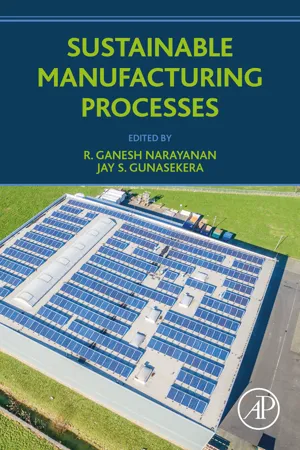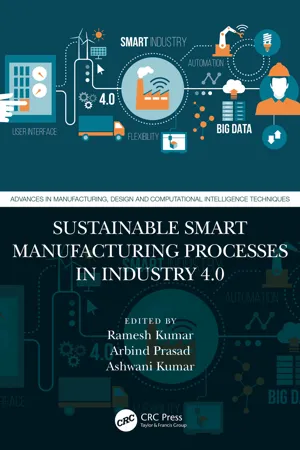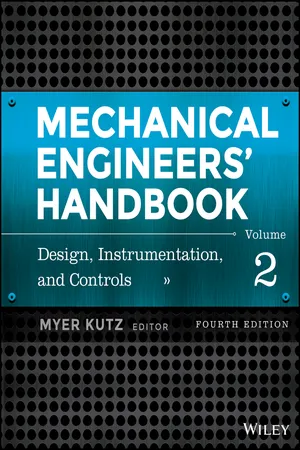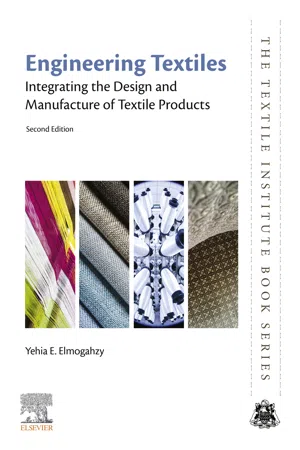Technology & Engineering
Sustainable Manufacturing
Sustainable manufacturing refers to the process of producing goods using methods that minimize negative environmental impact, conserve energy and natural resources, and prioritize the well-being of workers and communities. It involves integrating eco-friendly practices, such as recycling, renewable energy use, and waste reduction, into the entire production cycle to create long-term environmental and social benefits.
Written by Perlego with AI-assistance
Related key terms
10 Key excerpts on "Sustainable Manufacturing"
- eBook - ePub
The Dark Factory and the Future of Manufacturing
A Guide to Operational Efficiency and Competitiveness
- Philip J. Gisi(Author)
- 2024(Publication Date)
- Productivity Press(Publisher)
4 Sustainable Manufacturing
DOI: 10.4324/9781032688152-17Overview
In manufacturing, sustainability refers to the practice of producing goods in a way that minimizes negative environmental impacts, conserves resources, and promotes long-term economic viability. It involves considering the entire lifecycle of a product, from raw material extraction to disposal, and implementing strategies to reduce waste, energy consumption, and pollution throughout the manufacturing process. In the last section of this book, we will discuss key aspects of Sustainable Manufacturing, including the following topics.- Resource efficiency: Sustainable Manufacturing aims to optimize the use of resources such as energy, water, and raw materials. This involves reducing waste, improving energy efficiency, and implementing recycling and reuse strategies.
- Pollution prevention: This topic focuses on minimizing or eliminating the release of harmful substances and pollutants into the environment. This can be achieved by using cleaner production technologies, adopting green chemistry principles, and implementing effective waste management systems.
- Renewable energy: Sustainable manufacturers prioritize the use of renewable energy sources such as solar, wind, or hydropower to power their production processes. This reduces reliance on fossil fuels and lowers greenhouse gas emissions.
- Design for sustainability: The concept of design for sustainability involves considering environmental and social factors during the product design phase. This includes selecting eco-friendly materials, designing for durability and recyclability, and minimizing the overall environmental footprint of the product.
- Supply chain management
- eBook - ePub
- R.Ganesh Narayanan, Jay S Gunasekera(Authors)
- 2019(Publication Date)
- CRC Press(Publisher)
According to US Environmental Protection Agency (US EPA), the term “Sustainable Manufacturing” is the creation of manufactured products through economically sound processes that minimize negative environmental impacts while conserving energy and natural resources. Sustainable Manufacturing also enhances employee, community, and product safety.To put simply, Sustainable Manufacturing is all about minimizing the diverse business risks inherent in any manufacturing operation while maximizing the new opportunities that arise from improving your processes and products.“Sustainable Manufacturing” is no longer just nice-to-have an “option.” Today, a business imperative to be “future ready.” Companies across the world are facing increased costs in sourcing materials, energy, and meeting compliance. In addition, there are higher expectations of customers, investors, and local communities. There are also caps or impositions on greenhouse gas (GHG) emissions due to the threat of climate change that demand right choice of energy sources, technologies, and materials.Integration of economic, social, and environmental perspectives is the foundation of sustainability. Figure 17.5 shows the concept of Sustainable Manufacturing in these three dimensions.Figure 17.5 Perspectives of Sustainable Manufacturing. (From www.oecd.org/innovation/green/toolkit/aboutsustainablemanufacturingandthetoolkit.htm .)Many businesses have already started to take steps toward Sustainable Manufacturing. Their experiences show that environmental improvements go hand in hand with profit-making and improved competitiveness. However, many small and medium-sized businesses (SMEs) that account for more than 90% of all enterprises have not yet embraced these great opportunities. Their enterprises often struggle with their short-term survival, or cost pressure from clients, or lack of knowledge and resources to invest in manufacturing sustainably, or simply not know where to start.In the early phase of the sustainability revolution, the business was asking for the “evidence” that would prove that it was profitable to integrate business with environmental and social considerations. UNEP’s International Cleaner Production Information Clearinghouse (ICPIC) came up with 400+ case studies across more than 20 industrial sectors covering not just large but medium and small-scale industries. Similar case studies emerged at the WBCSD, APO, and UNIDO. Today, we do not need any more convincing. We want to know more about “how to go about Sustainable Manufacturing.” - eBook - ePub
- Chandan Deep Singh, Harleen Kaur(Authors)
- 2021(Publication Date)
- CRC Press(Publisher)
The manufacturing companies, now a days are in a tough situation where they are to handle the vast demand across the various segments of the market while making judicious use of natural resources which are depleting at an alarming rate. Moreover, this increased manufacturing activity has contributed to the problems like global warming, and environment degradation. These problems further lead to the health and social problems in the society. The government agencies are enforcing tough regulations to resolve these problems. So the manufacturing industry could not sustain long if some solution is not found at the earliest.The solution to these above-mentioned problems have been found in the Sustainable Manufacturing. The concept of Sustainable Manufacturing emerged at the United Nations Conference on Environment and Development in 1992 and is a key component of sustainable development, which balances three principal requirements: the social, economic and environmental. Sustainable Manufacturing is defined as the creation of manufactured parts through processes that are non-polluting, conserve energy and natural resources, and are economically sound and safe for employees, communities, and consumers. (http://www.nacfam.org ).If the manufacturing companies want to achieve the objectives of Sustainable Manufacturing, then they must minimize all kinds of wastes as well as the use of natural resources, raw materials and energy. This goal requires a fundamental re-think in the design of a part to take account of all stages of a part’s lifecycle, and a shift in manufacturing processes from cleaning technologies to clean technologies, which reduce the actual level of emissions produced as well as the energy and other resources used during processing. A set of necessary conditions that firms must fulfil in order to manufacture a sustainable part includes: - Yoseph Bar-Cohen(Author)
- 2018(Publication Date)
- CRC Press(Publisher)
According to the U.S. Environmental Protection Agency (U.S. EPA, 2016), Sustainable Manufacturing is“The creation of manufactured products through economically-sound processes that minimize negative environmental impacts while conserving energy and natural resources. Sustainable Manufacturing also enhances employee, community and product safety.”The concept of Sustainable Manufacturing can further be clarified by considering that planet Earth is a closed system with limited natural resources. Therefore, the current pace of resource consumption cannot be continued for a long time in existing resource-intensive manufacturing processes. For example, the minable phosphorous reserves on Earth is likely to run out in 50–100 years (Van der Houwen and Valsami-Jones, 2001). Materials and energy prices are going up and down in markets, and for the case of scarce resources, the situation is even more critical. It seems essential, then, to limit the extraction of raw materials from Earth’s lithosphere or biosphere and promote reuse, recycling, and remanufacturing of end-of-life/use (EoL/EoU) products.- eBook - ePub
- R. Ganesh Narayanan, Jay S. Gunasekera(Authors)
- 2022(Publication Date)
- Academic Press(Publisher)
Sustainable Manufacturing is mainly aimed to develop manufacturing processes, materials, reusing and recycling strategies, waste management methods, software tools, pollution prevention methods, efficient industry practices, and business development that will finally yield a product used in day-to-day life maintaining eco-friendly situation around us. The present chapter introduces various aspects of Sustainable Manufacturing starting from definition of sustainability, methods of implementing sustainability in manufacturing industries, sustainability assessment methods and importance, role of computational power in Sustainable Manufacturing, and finally, education for sustainable development. The linkage between Sustainable Manufacturing and Industry 4.0 is also briefly presented. Both basics and applied details are discussed with examples from existing case studies.Keywords
Computations; Economy; Ecosystem; Education; I4T; Manufacturing; Social; Sustainability1.1. Definition and importance
Some of the definitions of Sustainable Manufacturing (SM) are as follows.- • It is the design of human and industrial systems to ensure that humankind's use of natural resources and cycles do not lead to diminished quality of life due either to losses in future economic opportunities or to adverse impacts on social conditions, human health and the environment (Mihelcic et al., 2003 ).
- • It is defined as the mass production of manufactured products through processes, which minimize negative environmental impacts, conserve energy, and natural resources, are safe for workers, communities, and consumers and are economically helpful (Gupta et al., 2016 ; Davim, 2010 ).
- • It is the ability to smartly utilize available natural resources for manufacturing useful products and provide solutions that satisfy economic, environmental, and social objectives, without harming the environment, while continuing to improve the quality of human life (Garetti and Taisch, 2012 ). To achieve this, new technology, regulatory measures, and responsible social behavior are needed.
Although these are some definitions, an interesting observation by Moldavska and Welo (2017) reveals that SM has no unique definition. Some refer it as strategy or approach, whereas others define it as paradigm or system. According to their survey, several authors define SM as creation or production of product and services in available literature. Other terms are provided in Fig. 1.1 - Ramesh Kumar, Arbind Prasad, Ashwani Kumar(Authors)
- 2023(Publication Date)
- CRC Press(Publisher)
This chapter is discussing the prime factors, opportunities, and prospects of Sustainable Manufacturing through the technology of ‘Industry 4.0’. It also suitably depicts and clarifies major pillars behind this technology. Alongside attention to production systems, more focus is required on management, data handling, automation, the economy, the environment, and society in a holistic sense for the sustainability of the industry and humans. In addition to this, different theoretical and experimental outcomes of Sustainable Manufacturing metrics have been incorporated. Experimental studies reveal that the metrics most commonly explored by profitable businesses can be distilled into any number and are primarily concerned with the economic aspect, while the social and environmental metrics frequently appear to be negotiated with the sole intention of adhering to legal requirements. Scenarios, challenges, and future prospects of global Sustainable Manufacturing firms are also discussed and suitably incorporated in this chapter.1.2 Sustainable ManufacturingSmart and automated manufacturing technology is the centroid of ‘Industry 4.0’; in association with customer information, this improves the manufacturing of products. Sustainable Manufacturing is essential for industries for numerous external factors like stricter regulation, high consumer preferences, exaggerated energy costs, and environmental concerns for eco-friendly products [8 ]. Utilization of natural bio-based resources for various manufacturing processes needs to maintain regulation for raw materials as well as harmful emissions in the environment. The modification of materials and conversion into goods fulfillment of human needs is the definition of manufacturing [9 ]. Smart manufacturing can be subdivided into vertical integration, virtualization, automation, traceability, flexibility, and energy management. Apart from other parts, the business firm, including manufacturing, utilized the majority of the world's total delivered energy, which is almost half of the total energy produced [10 ]. All the leading countries, including United States, absorb more than 42% of the total energy consumption [11 ]. Similarly, the manufacturing sector in China utilizes 58% of the total energy consumption [12 ]. In addition to that, many strategies are implemented to minimize the environmental footprint of different production steps and numerous methods are followed to track and regulate variables like energy consumption [13 ], carbon emissions [14 ], and greenhouse emissions [8- eBook - ePub
Mechanical Engineers' Handbook, Volume 2
Design, Instrumentation, and Controls
- Myer Kutz(Author)
- 2015(Publication Date)
- Wiley(Publisher)
Through innovation, discarded products and manufacturing waste streams can be recovered and reengineered into valuable feed streams, producing benefits for the society, the environment, and U.S. industry. The United States is in danger of losing market share to its overseas competitors because it is not subject to the same drivers for change. It has been shown that manufacturing is responsible for much of the waste produced by the U.S. economy. In terms of energy usage, about 70% of the energy consumed in the industrial sector is used to provide heat and power for manufacturing. 39 Much of the heat and power required within industry is due simply to material acquisition and processing. Through new technology and innovative products and processes, utilizing previously processed materials for example, these energy requirements can be drastically reduced. A significant effort has been undertaken by various groups from a range of disciplines to characterize, define, and formulate different forms and means of sustainable development. Continued progress in sustainable development heavily depends on sustained growth, primarily focusing on three major contributing areas of sustainability: environment, economy, and society (see Fig 2). A relatively less-known and significantly impacting element of sustainability is sustainable manufacture, which includes sustainable products, processes, and systems in its core. The understanding of the integral role of these three functional elements of sustainability in product manufacture is important to develop quantitative predictive models for sustainable product design and manufacture - eBook - ePub
- Daniel H. Chen(Author)
- 2016(Publication Date)
- CRC Press(Publisher)
14 ]).FIGURE 12.1 Comparisons of various manufacturing paradigms. (Reprinted with permission from Jawahir, I.S., Sustainable Manufacturing: The driving force for innovative products, processes and systems for next generation manufacturing. 2011, College of Engineering, University of Kentucky: Lexington, KY.)However, the implementation of Sustainable Manufacturing faced challenges from multiple perspectives such as economical, managerial, and technological. For instance, early sustainable practices that focused on the end-of-pipe pollution control were costly and thus lack economic incentives. The management’s unwillingness to change together with the shortage of effective tools of measurement also hindered the progress toward sustainability. Fortunately, these challenges are gradually relieved by a shift in concept and business model, technological breakthroughs, and innovative tools to measure and facilitate sustainability.Retrofit and renovation of existing manufacturing processes for sustainability purposes are normally considered to incur extra capital cost in the short term. However, research studies show that the extra cost can be well justified by the adoption of new sustainable practices. For example, Lou and Huang [15 ] proposed the “profitable pollution prevention (P3)” strategy focusing on source reduction of waste that can achieve pollution prevention and economic incentives as well. Also, many leading industrial companies have seen economic benefits by adopting Sustainable Manufacturing concepts. For example, the 3P Program (Pollution Prevention Pays) from 3M company, which aims for reduction of waste at the source, helped save more than $1 billion from 1975 to 2005 and prevented the release of more than 2.6 billion pounds of pollutants to the environment [16 - eBook - ePub
Smart Manufacturing
Applications and Case Studies
- Masoud Soroush, Michael Baldea, Thomas F. Edgar(Authors)
- 2020(Publication Date)
- Elsevier(Publisher)
Chapter 12: Smart manufacturing: A sustainable energy perspective
Prodromos Daoutidis; Andrew Allman; Matthew J. Palys Department of Chemical Engineering and Materials Science, University of Minnesota, Twin Cities, Minneapolis, MN, United StatesAbstract
Increasing global energy use, the depletion of fossil fuel reserves, and the greenhouse gas emissions associated with their use motivate the discovery of other sources of energy with a view on sustainability. One promising example is renewable energy, but its implementation is not without challenges. This chapter presents two potential visions for overcoming these challenges: microgrids and combined renewable energy and chemical production. Specifically, the discussion in this chapter provides an insight into the features and potential implementation of these systems as it pertains to Sustainable Manufacturing of energy and chemical. Conceptually, these systems offer the flexibility to take full advantage of renewable energy resources while mitigating the associated challenges, primarily the intermittency of renewable availability and its effect on utilities. Mathematical optimization is discussed extensively as the backbone of designing and operating these systems to maximize their efficacy and economic viability, as well as that of incorporating renewables as a whole. - eBook - ePub
Engineering Textiles
Integrating the Design and Manufacture of Textile Products
- Yehia Elmogahzy(Author)
- 2019(Publication Date)
- Woodhead Publishing(Publisher)
33 ] (a) the struggle of where to begin and how to initiate sustainable strategy; (b) short-term versus long-term benefits; (c) finding innovative nontraditional approaches of sustainable development; (d) who is responsible for sustainable development, the organization or the government; (e) consumer's lack of awareness of the importance of sustainability; and (f) consumer's willingness to pay more for sustainably responsible products at least on short-term basis and until the economics of scales prevail.6.6 Engineering design for sustainability in the textile and garment industry: Sustainable process model
In the textile and garment industry, the development of a sustainable process faces many challenges that are results of long unsustainable practices. These include [34] (a) high energy utilization, (b) inadequate manpower-to-machine power ratio, and (c) poor waste management. These challenges are briefly discussed in the following sections.6.6.1 Energy utilization
The textile industry is among many other industries that need more innovations in terms of developing processes that are energy efficient. Some studies [35 –37 ] estimated the extracted energy consumption to manufacture 1 ton of cotton garments at 66,648 kWh and that to manufacture 1 ton of polyester garments at 91,508 kWh. In recent years, many concerns have been raised about the use of traditional fossil fuels and the need to use alternative fuel sources. These concerns are related to the loss of energy efficiency, and the rate of emission caused by fossil fuel energy production. Unfortunately, the world is going slowly in the development of alternative energy because of the amount of investment needed to make them viable. In developing a sustainable process model, options of energy use should be entertained for short-term and long-term development of sustainable process [38 ,39]
Index pages curate the most relevant extracts from our library of academic textbooks. They’ve been created using an in-house natural language model (NLM), each adding context and meaning to key research topics.









